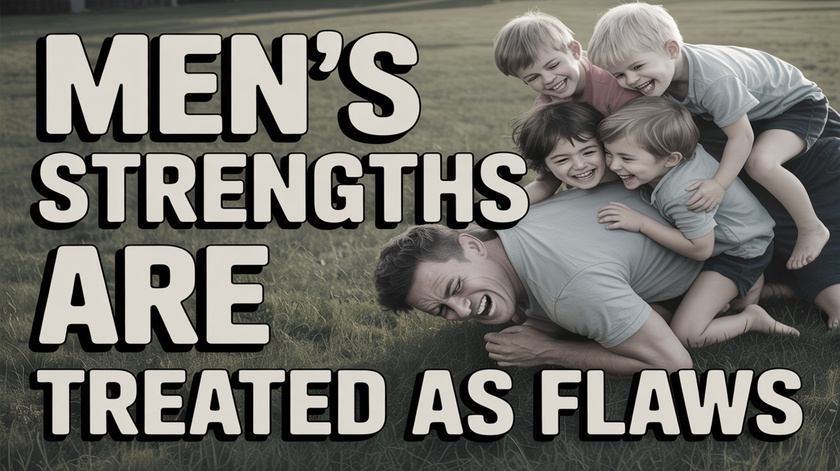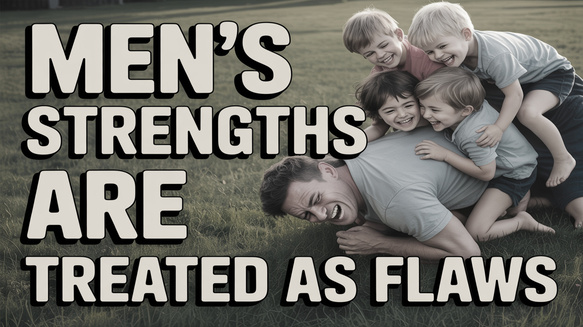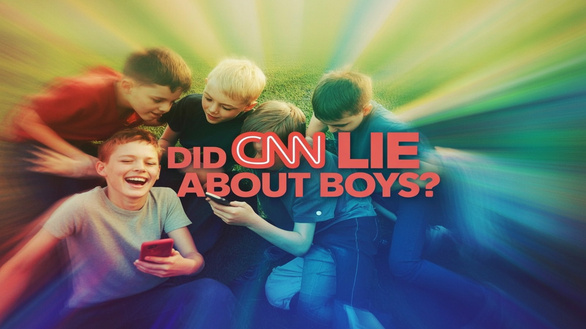Understanding Men 7: Hierarchy
Excerpt from “Helping Mothers be Closer to Their Sons“ pages 22-27
DIFFERENCES IN WAYS OF GETTING WHAT YOU WANT
The sexes are different in their strategies to get what they want. This difference starts early. Boys tend to be more physical and direct, demanding or playfully pushing another boy in order to obtain what he wants. Girls don’t seem to like this sort of method. Girls are more likely to use words or relational means to get what they want. Boys tend not to respond to this. Neither sex seems to be too keen on the other’s modes.
To get a better idea of how boys and girls differ in this way, lets look briefly at the anthropological research of Ritch Savin Williams observing an adolescent summer camp.17 Groups of boys and girls aged eleven to fourteen were housed in their own cabins. Let’s look at the boys’ cabins first.
Very soon after arrival, the boys started challenging each other, sometimes telling each other what to do, sometimes putting the other boys down. Each of these were maneuvers to try to attain higher dominance in the hierarchy of boys. Pushing and shoving was not unusual nor was making fun of weakness. In fact if weakness was exposed, the other boys would sometimes join in to mark their own dominance. Some boys barked orders and others followed, while some put up a challenge. The boys’ pecking order, their hierarchy, was being made clear to all and it happened fairly quickly.
Savin Williams found that both boys and girls used ridicule and name-calling as a means to create higher dominance. But there were some strategies used by the girls that were very different.
Unlike the boys, Savin Williams says that the girls maintained a sweet and agreeable attitude for the first week, making friends and being nice. But after the first week was up the girls started their own ploys to gain dominance. Their modes were more relational and less direct. Girls would ignore someone, or appear to “not hear” another girl in order to maintain dominance. Other tactics included gossip, social alienation, misinformation and withholding eye contact.
The boys’ strategy seems to be overt and out in the open. They seem to lack concern for the feeling reactions of their friends and are more likely to throw their weight around with bravado in order to be higher on the hierarchy. They just don’t seem to care as much if someone gets hurt in the process. The important thing is to be on top. We can see this sort of thing when boys are together with their friends and they will openly put each other down. Moms get upset with this but it needs to be understood as being their way to navigate the hierarchy. This does not mean that we shouldn’t help boys find kindness towards their friends; it does however mean that we need to understand these behaviors in their context.
The girls’ strategy seems more passive and clandestine. Savant Williams tells us that the girls, unlike the boys, seem to want to be perceived as “nice” and maintain that image whenever possible thus they take a week to build alliances prior to starting to use dominance tactics. Their dominance strategies are designed to be stealthy. Their strategies are often easily denied as not being “on purpose” or by claiming they had no motive to hurt. All the while the hurtful behaviors flow via social alienation, gossip, exclusion and other means.
Both boys’ and girls’ strategies leave some chaos in their aftermath, the boys’ more overt and the girls’ more covert. Both strategies are designed to create and maintain dominance over their peers. It is easy to see how these very different strategies don’t mix very well. This may play into what we will look at next, the very different ways that boys and girls choose to play.
PLAY
This stark difference in the ways that boys and girls work to get what they want may be a part of the reason that boys and girls have such different play patterns. Boys’ and girls’ play is markedly different and the difference starts fairly early. By the time boys are three years old they prefer to play with boys. This tendency to play with ones own sex increases through childhood. One study found that four-five year olds played on average three hours a day with their same sex peers and only one hour’s time with mixed sex groups. Then when the children reached ages seven or eight the ratio of same sex to mixed sex groups increased to eleven to one.18 Clearly the boys wanted to play with boys and the girls wanted to play with the girls. This pattern has been noted around the world in places as diverse as India, Japan, Canada, Kenya, the Philippines, Mexico and the U.S.19
Boys and girls not only differ in preferring same sex play, they also differ in the types of personal relationships they form both at play and in their leisure. The boys move towards a larger number of friends often forming coalitions while the girls tend to be more likely to form relationships with a single friend or maybe two. Let's look at the girls first.
Girls form relationships that are based on personal disclosure that offer high levels of intimacy and emotional support. They are often built as an intimate relationship that also serves well as a means of support in times of personal difficulties. The time commitment for such relationships is high as is the social risks of such personal exposure if the relationships fail as girls may become acutely vulnerable to relational aggression, ostracism and gossip. The time involved in maintaining such relationships tends to limit them in number.
The boys are different. Boys tend to form relationships with those in a coalition. In others words, being a part of a team. Personal disclosure is not mandatory. Specialization within that coalition is. When you are on the baseball team if you can play catcher that might be a valued asset within the coalition. Boys learn to work at having a specialty that is valued by their coalition. They also learn to be tolerant of other boys they might not usually want to be around if those boys are helping their team to win. Boys learn where their hierarchical place is within that coalition and strive to improve and they also get some gratification by being a part of the collective whole.
Evolutionary psychologists suggest that play in the animal kingdom is usually practice for what the animals will be challenged to do as adults. The young garfish play by jumping over sea turtles in the water. These skills are later used in escaping from predators. Lion cubs tend to pounce and to bat each other around in a rough manner, which also gives them practice at the later skills they will need as predators. Humans also seem to follow these same patterns. The two play patterns that are the most statistically significant are those of play parenting and rough and tumble play. As you can guess, the girls are far more likely to engage in play parenting in childhood and the boys are also more likely to engage in rough and tumble sorts of play which we see developing in boys (and some girls) by the age of three. Evolutionary psychologists suggest that these tendencies point towards the likelihood that boys may be rough later in life and the girls will be more likely to take on active parenting roles. Remember evolution does not care about what has happened in the last 50 years. It simply responds to what has happened over the last thousands of years and during those times the men were needed to protect the boundaries and the women were needed to nurture the young. This has left our boys with an urge to get rough.
In cultures that need to have the men protect borders from attack, the games they encourage young boys to play will often include physical combat. An example is the Sioux tribe in North America. One of the games the boys would play is the Swing Kicking Game. This game lined the boys up in a row facing each other. The game begins when the question is uttered "Shall we grab them by the hair and knee them in the face until they bleed?” At that point the boys started swinging and kicking with the object of getting their opponent on the ground and then kneeing them in the face. The boys who took a knee to the face would continue fighting bloodied or not. After the game, according to one report, the boys would laugh and talk about it with few ever getting angry.20 These same skills would be later used by the boys when they would need to protect their tribe’s boundaries and fight off intruders as a coalition. This sort of practice along with knowing their own strengths and weaknesses and those of their compatriots on their team would help them later in a real battle. Their play was preparing them for later danger. In cultures that do not need to have the men guard perimeters, boys are discouraged from rough and tumble, violent games. Interestingly, boys seem to gravitate and find ways to take part in rough and tumble play even if their culture discourages it. Having rough males who can protect your borders has been a very positive thing for cultures to have. Without it, many cultures would likely have died off.
The male capacity to protect has a number of benefits in keeping cultures alive and the inhabitants safe but it also has some significant drawbacks. The number of male to male murders that take place are about thirty to forty times the number of female to female murders that occur.21 These male on male murders are usually not related to other crimes, but to disputes over status or a girlfriend. Again, it is hierarchy and competition setting off disputes that can be lethal. They usually occur in males who are fifteen to twenty-five years old and are more likely to occur if the male is unmarried.22 Think dominance hierarchy and status. When a young man’s status is questioned it can lead to great trauma especially if he is limited in maturity, under the influence of drugs or alcohol or mentally ill. The vast majority of men are able to contain this power without being inappropriately violent. A few cannot.
17. Savin-Williams, Ritch C. Adolescence: An Ethological Perspective. New York: Springer-Verlag, 1987. Print.
18. Maccoby, Eleanor E., and Carol Nagy Jacklin. "Gender Segregation in Childhood." Advances in Child Development and Behavior Advances in Child Development and Behavior 20 (1987): 239-87. Web.
19. Geary, David C. Male, Female: The Evolution of Human Sex Differences. Washington, DC: American Psychological Association, 2010. 322. Print.
20. Hassrick, Royal B., Cile M. Bach, and Dorothy Maxwell. The Sioux: Life and Customs of a Warrior Society. Norman, OK: University of Oklahoma, 1964. Print.
21. Geary, David C. Male, Female: The Evolution of Human Sex Differences. Washington, DC: American Psychological Association, 2010. 414-415. Print.
22. Ibid.
——————————————————-
End Excerpt
So hierarchies start early for boys and men, and they do so automatically. Next week we will start having a look at some early male hierarchies that may surprise you. Men are good!























